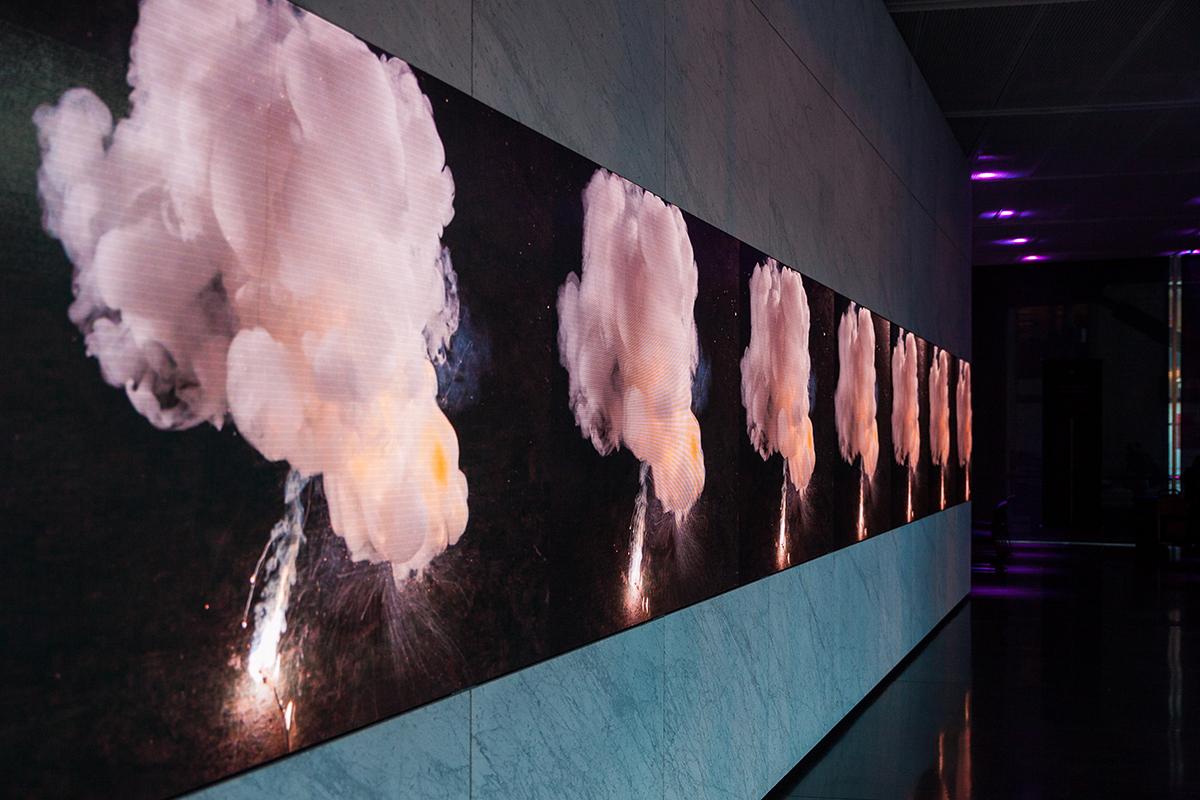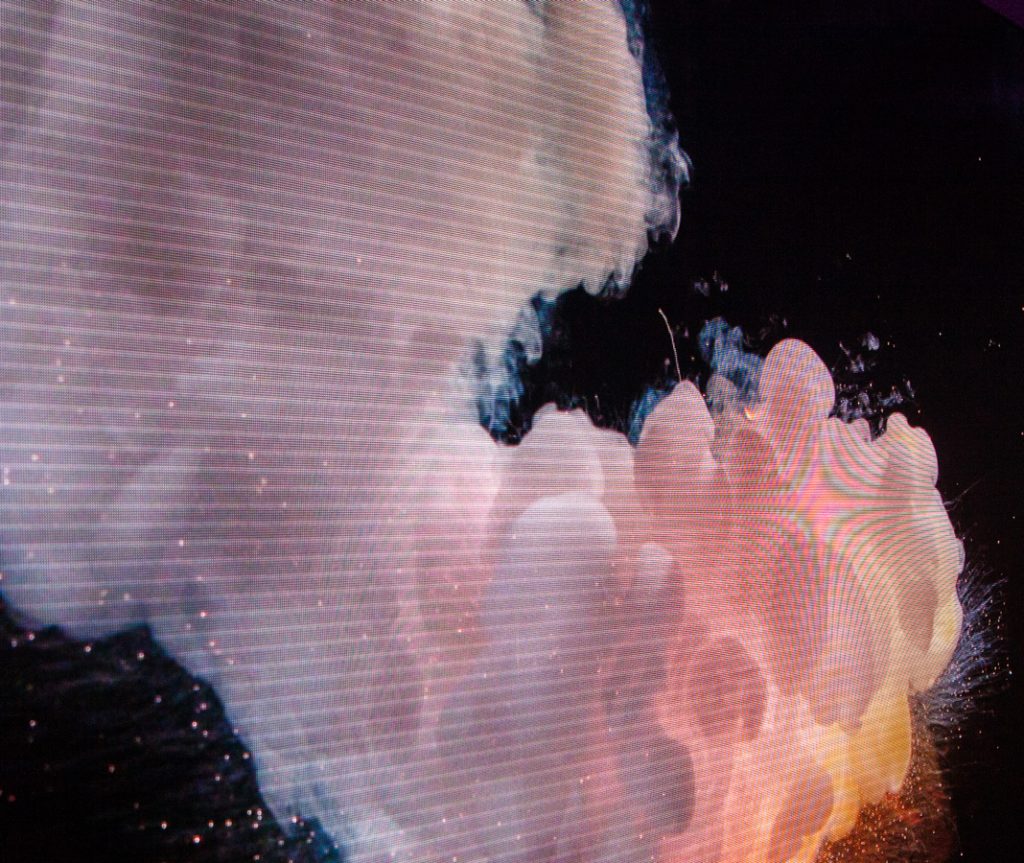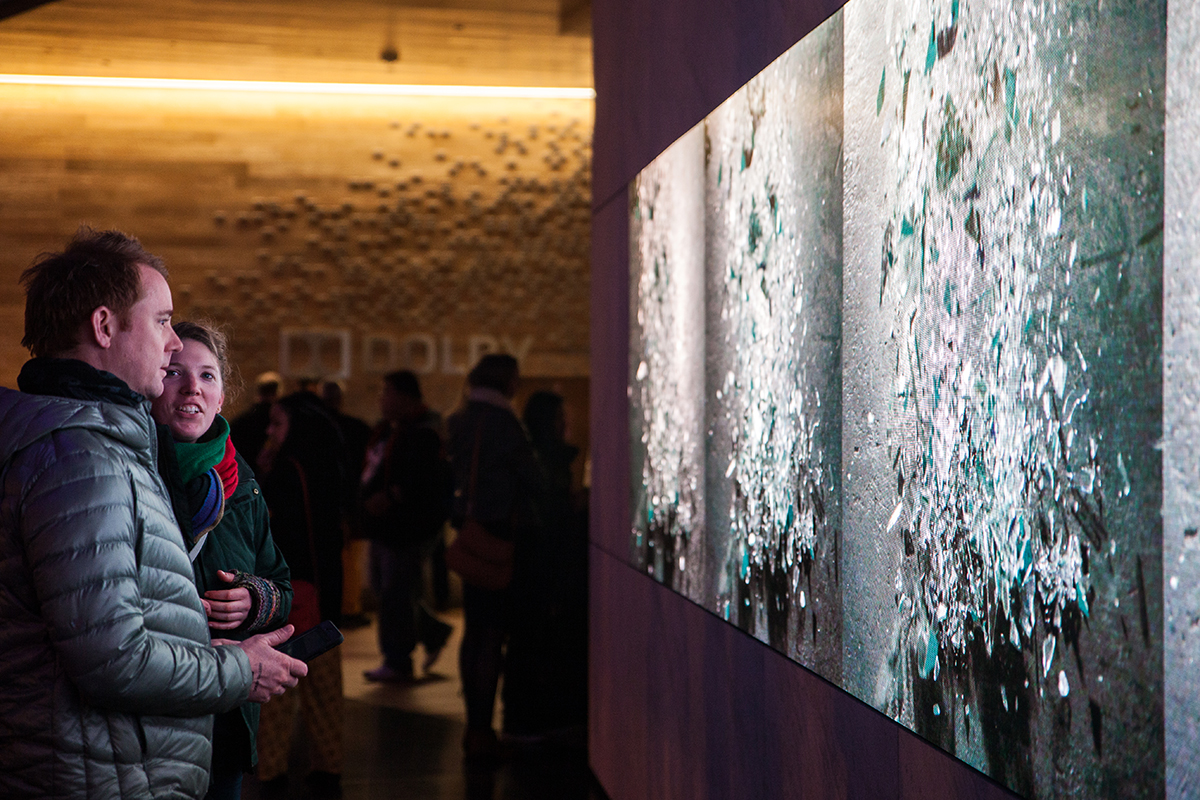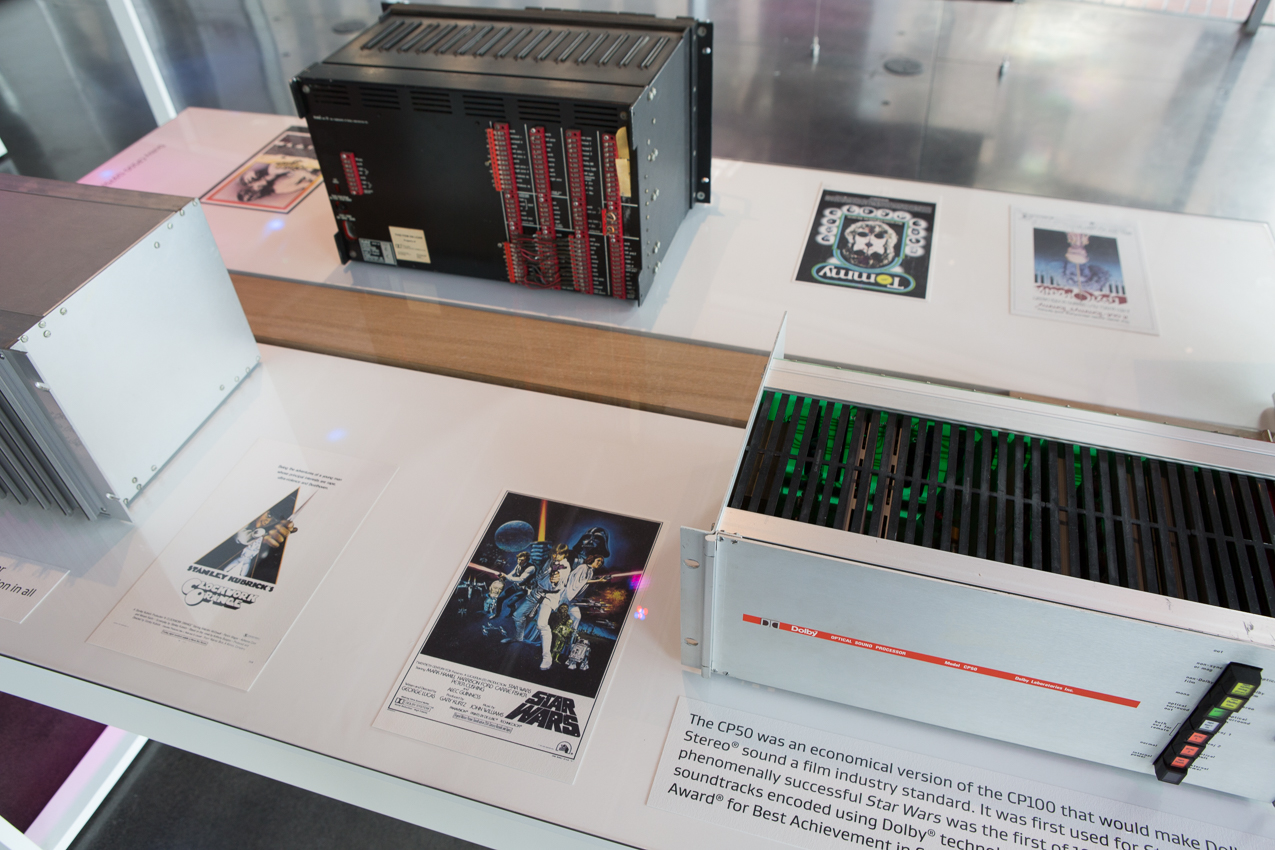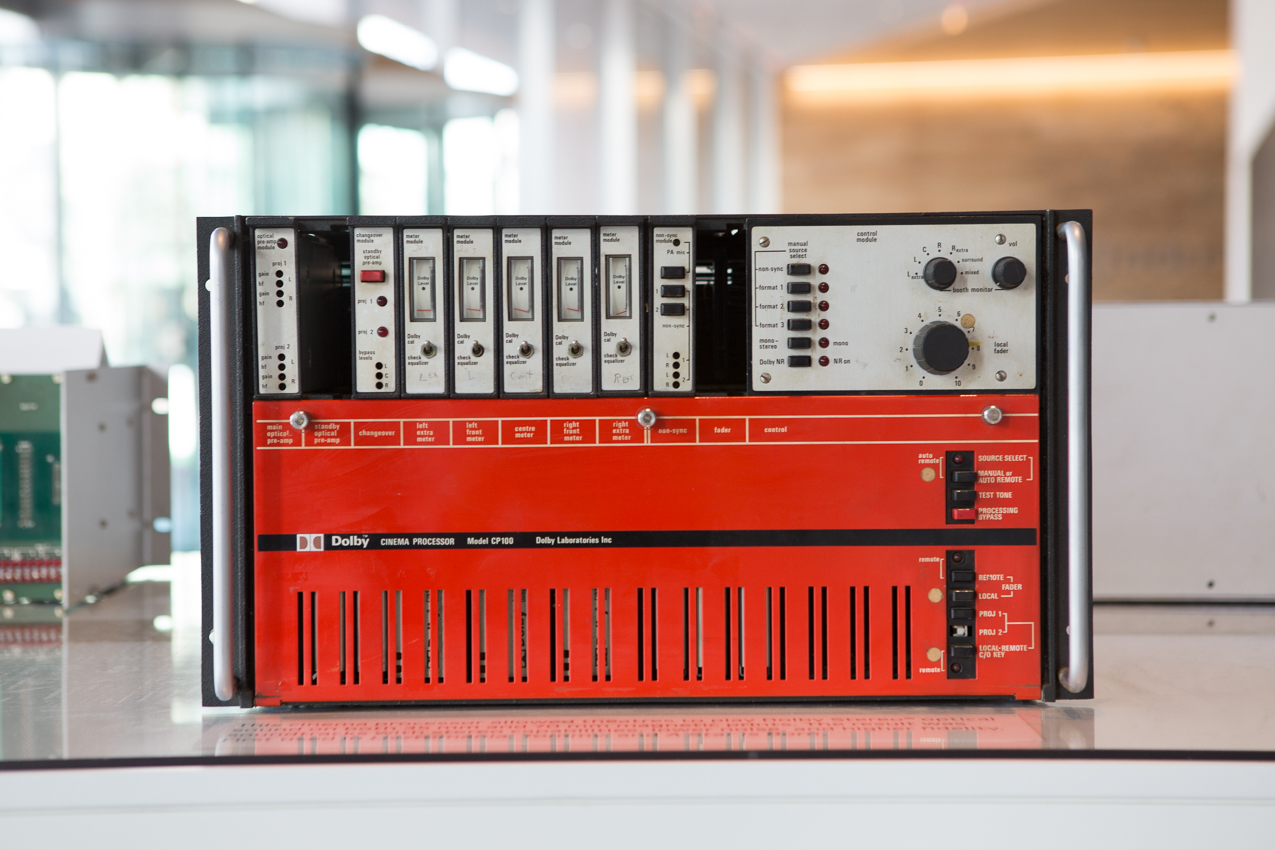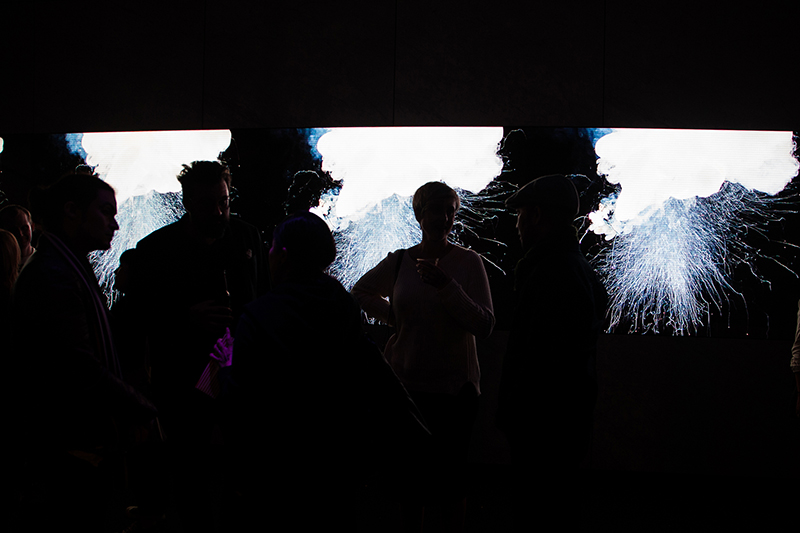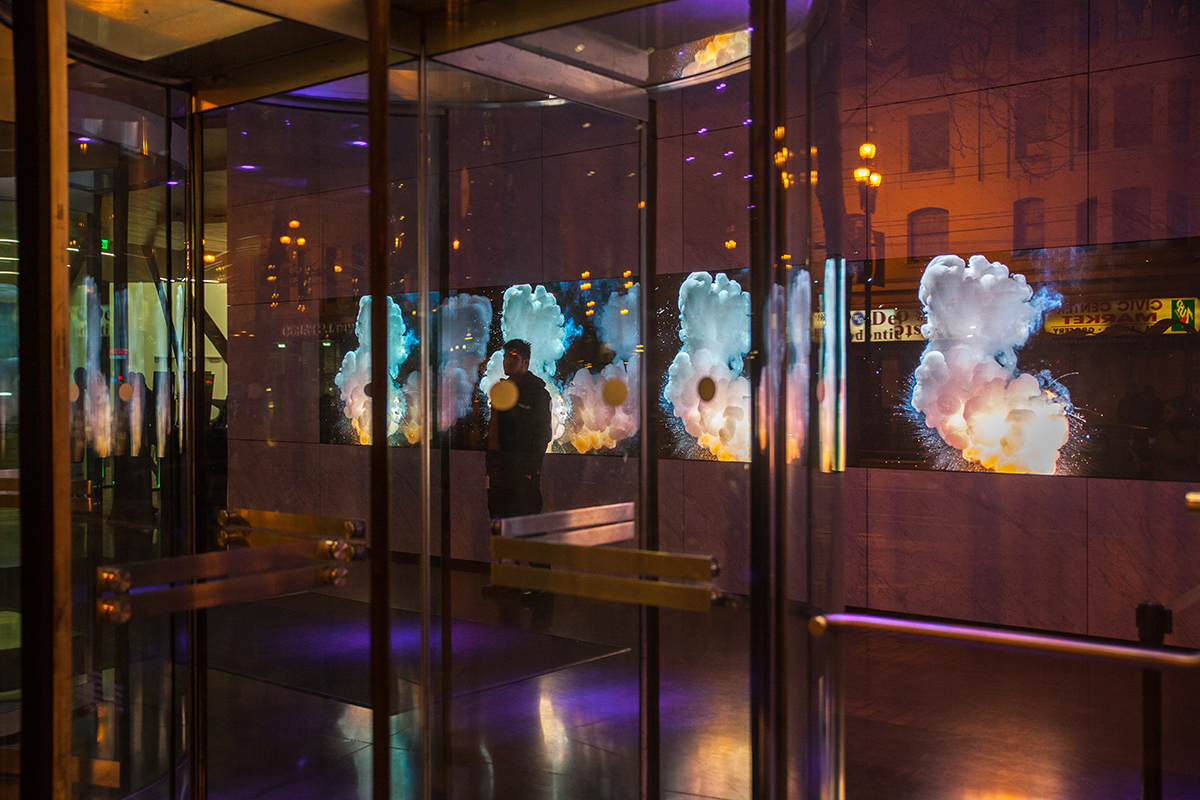MEGAN STEINMAN
Exhibitions + Publications + Public Programs
VISUALS: Sophie Clements
SOUND DESIGN: Jo Wills and Sophie Clements
Cinema Magic was an exhibition about the history of sound in cinema. Its centerpiece was a three-part video installation, Attempting to Delay the Inevitable (2016), by London-based visual artist, Sophie Clements.
Sophie transformed ordinary materials—smoke, mirrors, and water—into cinematic sculptures using “bullet time” motion techniques. Her 360-degree camera rig captured the emotional action of an explosion, a crash, and a spill from all angles, splicing a series of single moments into multiple frames. The result was a digital film strip that appeared to wrap around the gallery's architecture.
Dolby Gallery video installations utilize a custom Dolby Atmos system to create three-dimensional listening experiences. Sophie's soundscape circled around the listener, positioning viewers at the center of her onscreen action in homage to the history of surround sound.
Cinema Magic also featured a collection of cinema “firsts,” including the early photographic experiments of Eadweard Muybridge loaned from Stanford University's Department of Special Collections and University Archives, and a selection of Dolby’s original film processing hardware. Large-scale signage on the history of cinema sound chronologically connected these “firsts” with present day. Sophie’s video installation thus became a culmination of cinema technology as seen through the artist’s lens
Images courtesy of Imprint Projects.
